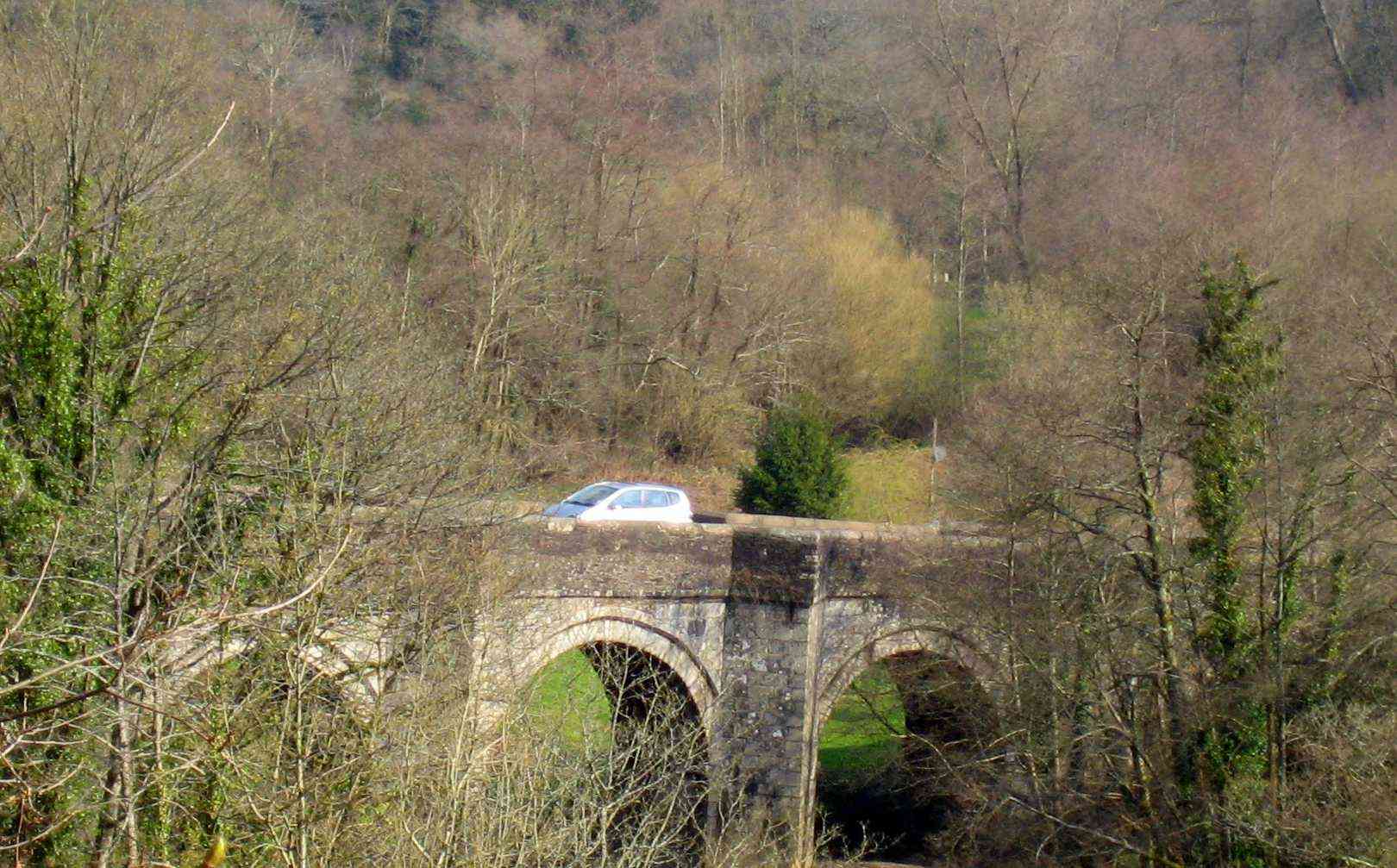 |
|
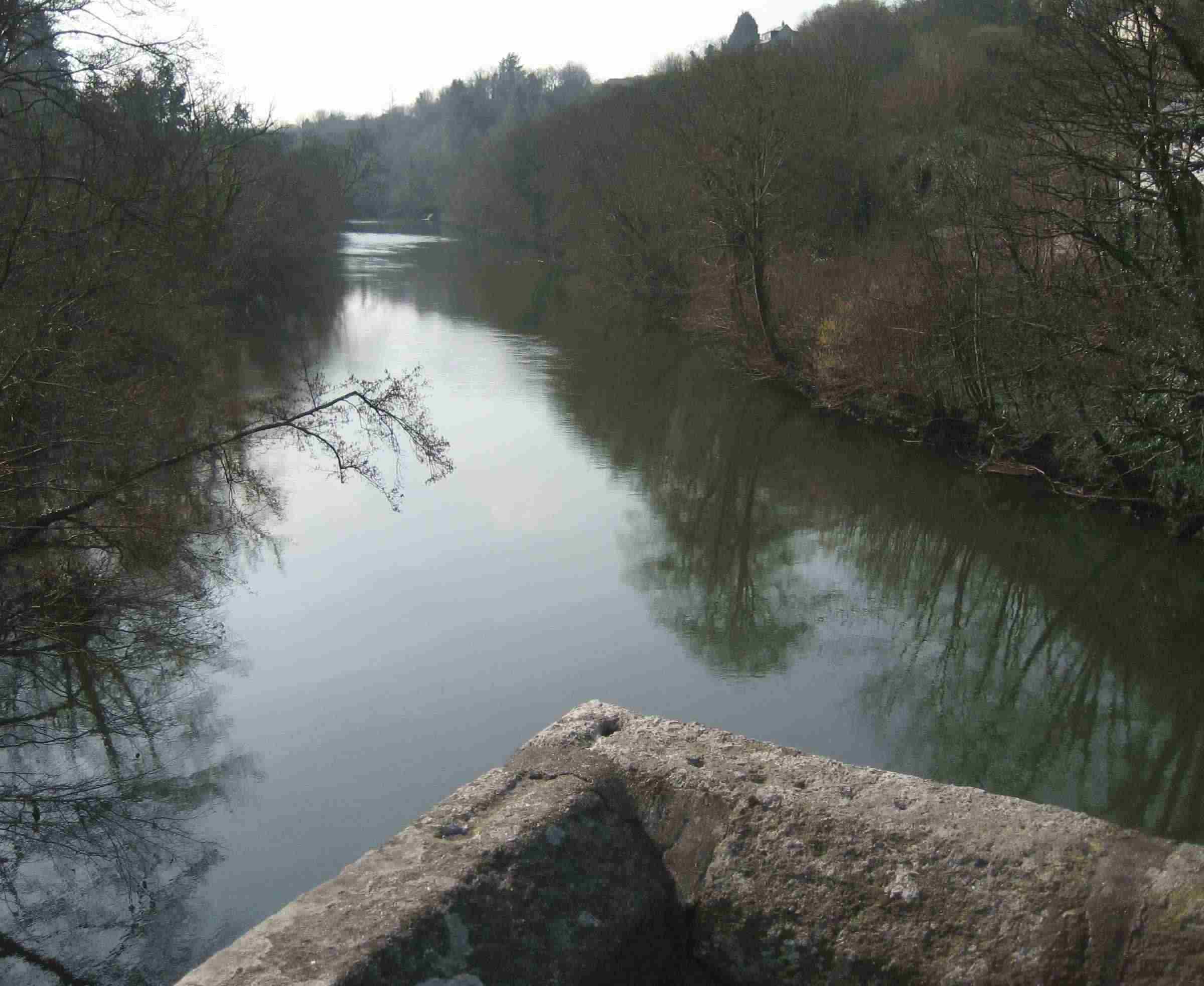 |
|
| Crossing the River Tamar at Gunnislake, one enters Devon and immediately encounters a steep hill. After passing through Tavistock, Dartmoor awaits | |
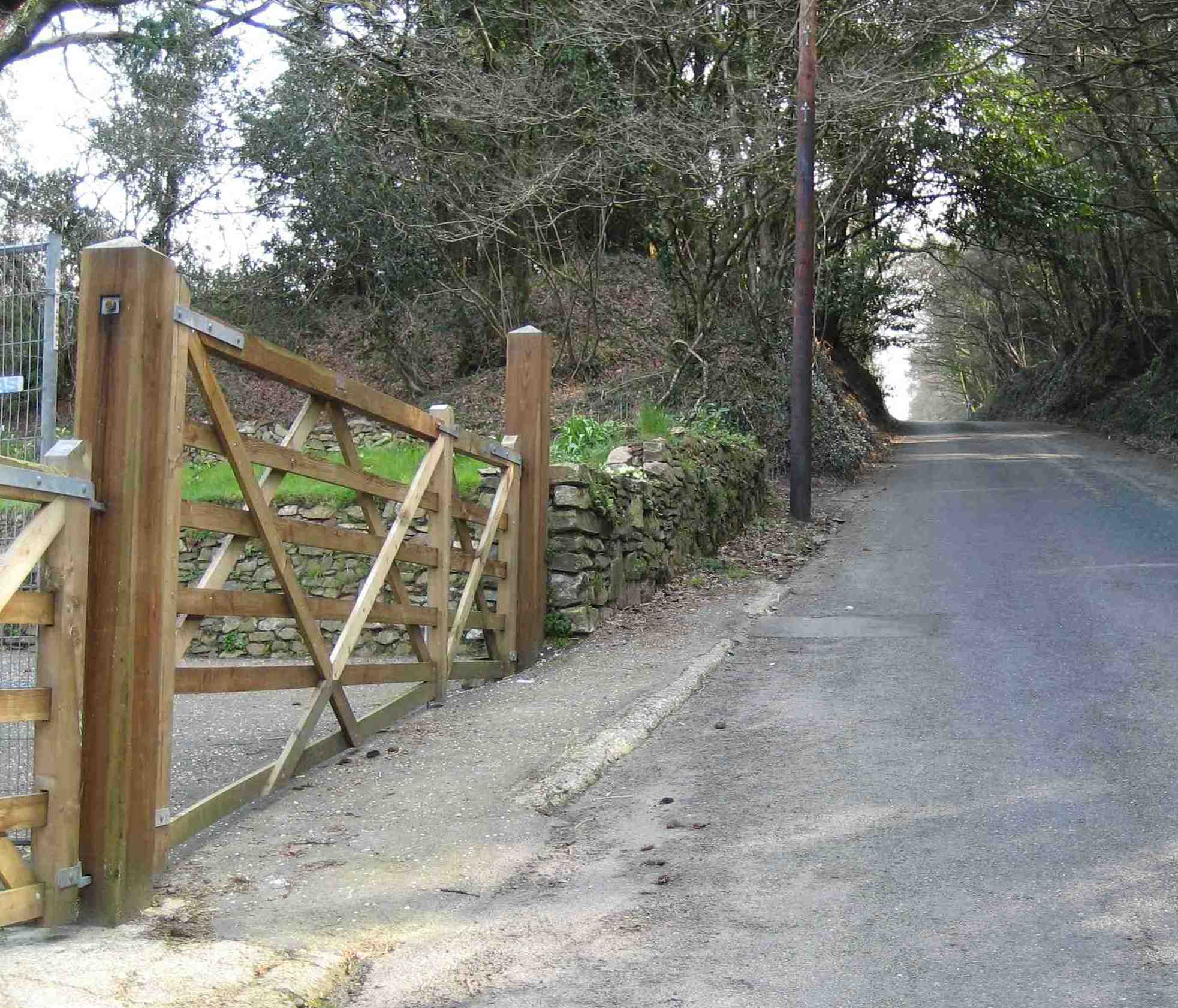 |
|
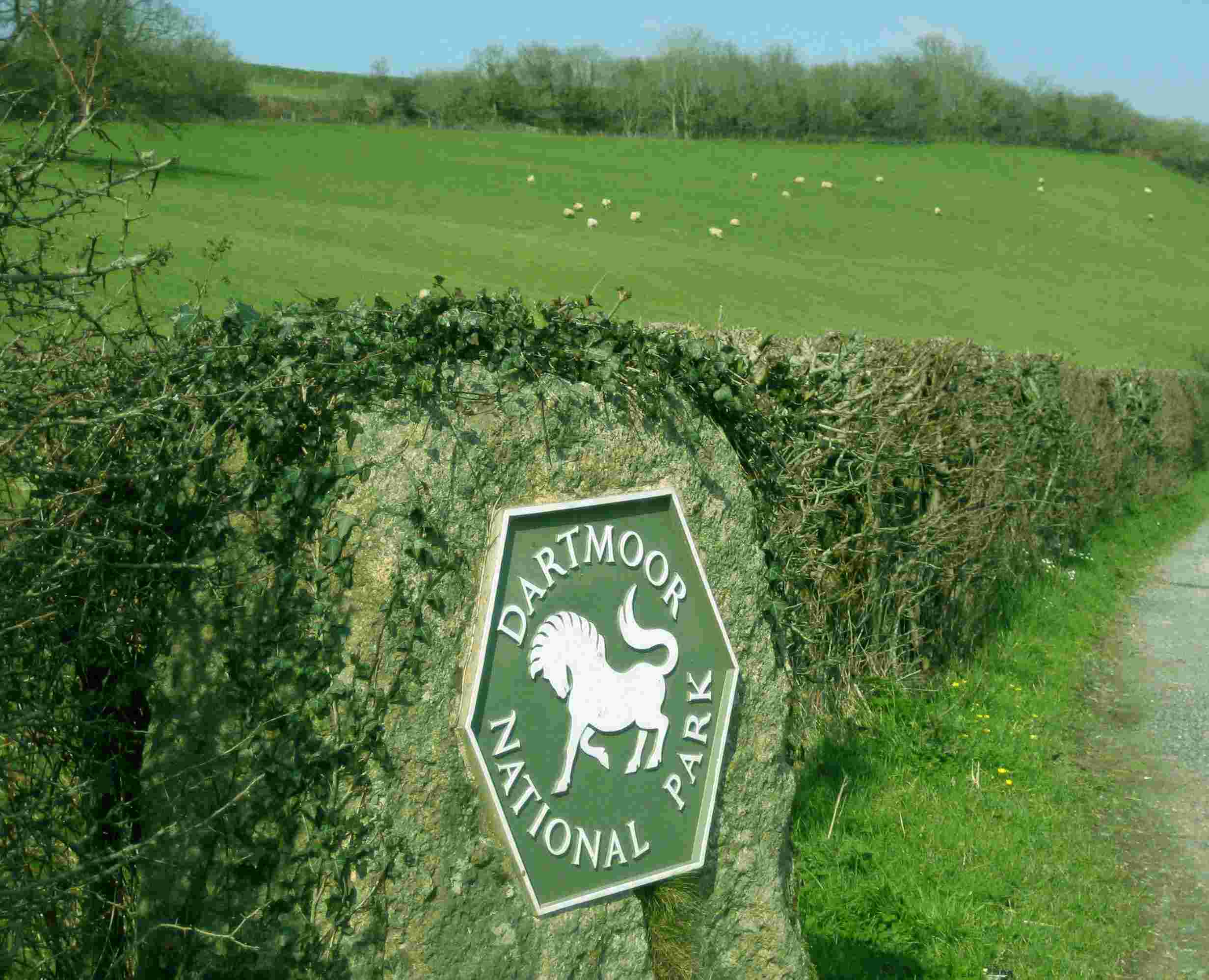 |
|
| Days N1 - N14 English West Country | |
|
Northbound Home Start hiking here English West Country English Midlands North of England Southern Scotland Central Scotland Scottish Highlands Southbound Home |
Monday, March 26, 2007
Time of departure: 8.45 am Time of arrival: 4.15 pm Place departed: Callington, Cornwall Place arrived: Peter Tavy (on Dartmoor north of Tavistock, Devon) Miles: 12.9 Cum miles: 101.3 Percent complete: 10.9  Churchtown
B&B, Peter Tavy *** Churchtown
B&B, Peter Tavy ***Cost for bed and breakfast: £27 ($54) |
| Overview of both
hikes Excerpts Statistics What others say Acknowledgments Contact me Copyright Links |
|
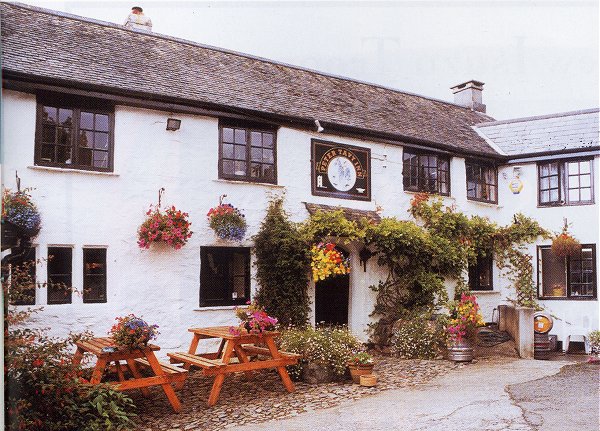
|
|
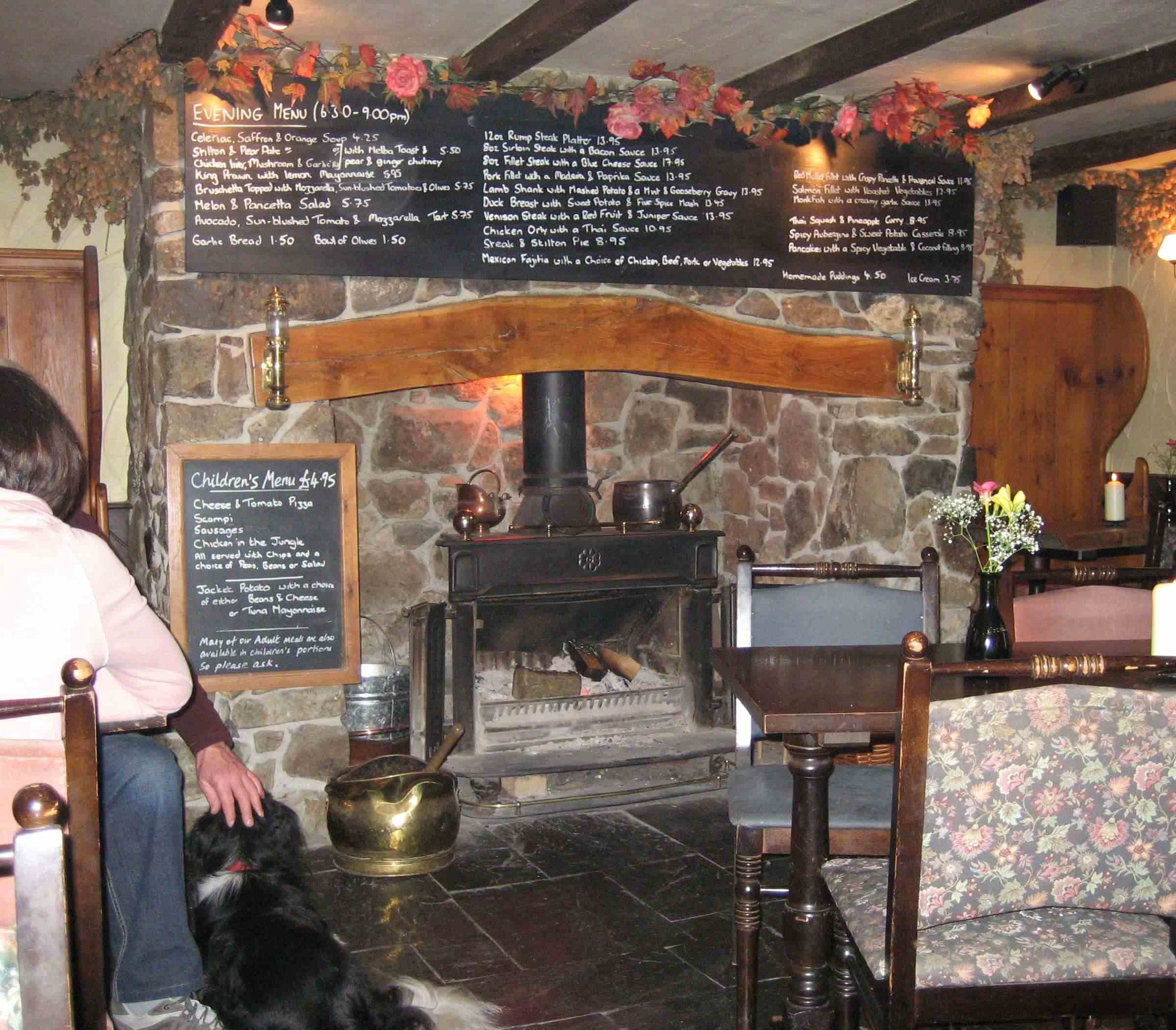 |
|
| Top: Peter Tavy
Inn, Dartmoor, photo courtesy of Jill at www.dartmooraccommodation.co.uk Bottom: Dining room shot by author |
|
| I
like to breakfast early when hiking because I feel better if I can put
some good miles behind me before noon. At most B&Bs, that means
a
breakfast at about 7.30 am, which is a compromise between my even
earlier desires and the landlady's tolerance. For some reason, at
the Coachmakers
Arms in
Callington, I let the innkeeper talk me into an
8.30 am breakfast. I was duly on time for it. But,
according to the cleaning lady, who was dropping cigarette ash into her
coffee at that hour, the innkeeper was still asleep. I paid
my
bill, sans breakfast, having a hard time getting them to process my
credit card. Not so much because of the missing breakfast as for the late start, I was now foul-tempered enough to greet the town undertaker with a barely disguised "Good mourning" when I met her on my way out of town. On the route to Gunnislake, five miles from Callington, I was glad to see Annie's Place, which proudly proclaimed "Breakfasts all day". But apparently 10.30 am wasn't part of the day, because she was closed - and as a further gesture of business acumen, a note added "No credit cards". These were experiences of England-of-yesteryear. But occurring in the present, I concluded that breakfast was not to be mine today, so I ate my supermarket cheese and drank water from my canteen. Credit card usage proved problematic throughout my hike. British cards have embedded chips with a code, and can be used by a card reader in which one types in the code and gains instant approval. Merchants are meant to be able to still handle chip-less cards that require a connection for approval – but the smaller merchants have often neglected to keep this capability. So a “Visa” or “Mastercard” sign may actually mean “cash only” for a foreign visitor. But some merchants seem to hate even British cards. Some of these will display a sign to indicate a surcharge to use a card. How big a surcharge? Astonishingly, it can range up to about £5 ($10). I made sure I carried cash. There’s another little credit card matter that I’ve experienced in Britain, and it’s not at all innocent inefficiency or open greed. In my opinion, it’s close to robbery. The scam consists of converting your charge to U.S. dollars (or your home currency, whatever that is) right when you charge the card - using an outrageous rate-of-exchange. There are credit card payment processors that have signed up merchants to do this, rewarding them with some of the ill-gotten gains. This kickback is known as a "rebate to the merchant". It matters little that you incurred the charge where the legal tender is sterling, and the merchant may not even ask you before he makes the charge in dollars. The rate is not only far worse than you would get from your own credit card company if it converted the charge itself. When charged in dollars at the point of sale by the merchant’s credit card processor, your own card company and your bank usually still add their customary charge of up to three percent. They do this just because the purchase was made abroad. In this way, they plan to invoke your outrage against the foreign card processors muzzling into their own overcharging monopoly. Thus your losses are compounded. I investigated this practice by asking one such merchant whom he used to process his credit card charges. I then approached the card processor (a bank) as a merchant, and asked how I could rip off my customers in my (nonexistent) business in this same delectable way. After telling me they wouldn’t write about it but to call them, greed slowly got the better of them, and they spilled the beans bit by bit over several emails. Which bank? Fear of a reprisal lawsuit just to wear me down makes me take refuge in a broad answer. Of the four largest Irish banks, one has had its employees imprisoned for money laundering. Another paid fines for tax arrears and false account designations, and had its CEO resign when pornographic material was found on his computer. The parent bank of a third was found to have overcharged its own customers on foreign exchange transactions for eight years. Only one of the four seems to have a clean record. On this basis, I hope I have covered my tracks by spreading manure widely. But, then again, I’m just a dumb hiker. There is a very steep descent into Gunnislake, for here one crosses the River Tamar, which separates Cornwall from Devon. Once in Devon, the road ascends steeply, especially if you take the shorter and steeper old road instead of following the gentler but more circuitous path of the new one. The bridge itself is a single-lane, stone-arch structure. Like many 18th-century bridges that replaced medieval bridges of yore, it's known as the New Bridge. It was psychologically uplifting to have reached Devon at last, after a six-day slog through Cornwall. But my hopes for a flatter countryside had been dashed at the pub last night when a local had told me that if I was going anywhere near Dartmoor in Devon, then "Cornwall is to Devon what Kansas is to Colorado". He had not been to the States, but the British tend to know things about the States that Americans do not, such as the state of overcrowding in our prisons, our fine music education in high school, as well as our guns, culture, race problems and the like. I took his warning seriously. In actuality, electronic maps make "hilliness" an easily-measurable matter. In route calculations, they can report the cumulative number of feet "up" and the number "down". Hikers then boast that they've climbed Mt. Everest before they are far along on their route. It can hardly be an apt comparison. That's not "hilliness" but "silliness". I reached Tavistock in the early afternoon, and wanted to stop there. It's a charming market town, with an old square and myriad shops and hostelries - a place to shower off and rejoin civilization again. But there was no accommodation. The Tourist Information Centre found me a farmhouse B&B in Peter Tavy, a village three or four miles north. I accepted because I needed the shelter, and would be forced into another three miles along my route (which is always progress). To stave off hunger pangs and fortify myself for the miles still to go, I stopped at a coffee shop in Tavistock for coffee and a bagel. To protect the innocent, I’ll call it Tavistock Java. Tavistock Java proved to be one of those slow-paced, sociable hideouts where you can read the newspaper for an hour after you’ve finished your coffee. You can perhaps raid a neighboring empty table for a half-eaten discarded muffin if you are that way inclined - not that I would even think of it. You can sit indoors or out. Indoors, the furniture is more chic, but outdoors you can take your dog, give him a bowl of water, smoke, and see more of the passing scene. If you frequent coffee shops, you will recognize the moment that the coffee has gotten a little too cool, and the muffin or bagel is eaten, and by that time you realize you've read the best part of the paper, have failed to do the crossword, and have forgotten to take your pills. You try to refill your cup with warmer coffee, but you find the coffee urns are empty of everything except a stale smell of burned java. Absent any nubile and underclad young ladies, which are rare at this time of year, you realize that it's time to go, since the place has now outlived its promise. Indeed, Tavistock Java had zilch to offer at this point. The free artisan bread tray was empty. Even the guy who cleans the tables had not prematurely taken away anyone's food and angered a customer for my entertainment. But today was different at Tavistock Java. My indoor seat was at a table at a window facing the street, where I took in a view of about five outdoor tables occupied by two smokers and two dogs, one a laid-back poodle (or so I thought) and the other a clearly lazy Labrador mutt. Sometimes dogs can be as lively as my ten-year old cat taking a sleep during his nap. This was such a moment and all was drearily quiet. After all, it was the middle of a sunny afternoon. I defy anyone to claim that canine behavior is understood well enough to warn that the Labrador and the poodle were about to start World War 3. Neither dog growled at the other, and there was no food or lady dog to compete over. Perhaps one dog raised an indecipherable canine finger to the other? We will never know. But one thing is certain: the large Labrador and the small poodle emerged from their vegetative state and suddenly lunged at each other with Herculean energy and a din to match. In barely a second, they went from lapdogs to weapons of mass destruction - locking jaws, one biting into the upper jaw of the other, and the other biting into the lower jaw of the first. This is perhaps an inexact description of the anatomical implications, because the ear of the poodle and the testicles of the Labrador were at times involved as the dogs heaved around. It is hard to give a bite-by-bite account due to the speed and the din. Regardless, once in the agonizing jaw-to-jaw embrace, the dogs managed to yelp and even bark as they alternately advanced and retreated, and then turned this way and that. In short order, they wound their leashes around each other and the legs of the chairs and their owners, who were thus included in the fray, even before their lawyers had reached for retainer forms and jumped into their taxis. Thus galvanized from nicotinic trances, the dog owners had little time to reflect. One was soon deposited face down on the concrete by the effect of the leash on his chair and his legs, and the other face up on the concrete by similar forces applied in the other direction. In this position, the face-up owner continued for a second to draw on his cigarette for just long enough for it to glow red at its end before the larger dog backed into his face and sat on it. This additional stimulus (known medically as volcanic anus) gave the big fellow renewed energy, which caused the two dogs to pull over an entire set of two coffee tables, bringing scalding coffee down on the smaller dog. At this moment, the smaller dog decided he would never, ever give up, and the larger dog had no option but to fight on. I will not bore you with a description of the additional phases of this canine epic. It goes without saying that at some point the owners recovered enough to try to pull their animals apart - an attempt that was only successful for long enough for one dog, feeling constrained to his detriment, to turn and bite its owner before resuming the jaw-to-jaw death-lock. In fact, the dogfight only ended when an onlooker applied a patio chair from on high somewhere between the shoulders of the two dogs who then parted to angrily confront the challenge they now faced as allies in a campaign against patio furniture. But the human drama was still in its infancy - as then a crowd of onlookers gathered, a police car arrived, the owners exchanged names and addresses, and a Tavistock Java kitchen knife was used to cut away a leash from the chair around which it had tightened beyond mere finger-loosening. I am glad to report that my seat at the window offered me a view of the maelstrom without endangering my body or psyche. I have exaggerated mainly by inventing the volcanic anus occurrence. My heart beat faster for a while, but settled down when the two dogs also settled down with their owners, one wagging his tail and the other busily lapping at a cup of water. True, there was more than a little blood around. But at any rate, the activity moved from the physical to the legal, possibly with an intermediate veterinary phase. If this had been America, the legal side would surely quell any danger of the fight being over for the rest of the decade. Truly, it was an exciting day. Thus, after experiencing shockingly-live entertainment in Tavistock, I set off for Peter Tavy, passing a couple of public, i.e., private, schools enroute and entering Dartmoor. My digs in Peter Tavy were in a farmhouse, and perhaps the proximity of the farm is the reason that there were flies in my room when I arrived. Not to be defeated by this, owner-landlady Noreen Lane had the vacuum cleaner out in a jiffy and sucked them all away. When anyone asks me the difference between a B&B and a hotel, I will tell this story. Some B&B owners really do care, and Noreen and Bill Lane are among them. Their B&B, named Churchtown, has outbuildings, and is set in a beautiful part of the country with a view to match. Breakfast next morning was excellent, the fine Chinaware matching the company. On departure, Noreen wanted to contribute to the charity I was hiking for. Since I had made no charitable commitments, I politely declined. Peter Tavy has a 15th-century, nationally acclaimed pub, the Peter Tavy Inn. I walked the short distance there, knowing I was in the country when a farmer’s dogs, border collies, one with a single eye but fortunately not in the middle of his forehead, chased me from the proximity of the abandoned car in which he kept them. In the country, this situation wasn't as distasteful as it would have been in a town. I easily recognized myself as the interloper. At the inn, I dined on the least expensive main meal, a vegetarian dish of spicy eggplant and sweet potato casserole with a salad and garlic bread. With a pint of local ale, this cost £11.50 or $23, about twice what I would have paid in the U.S., but the ambiance was wonderful, the food excellent and, as they say, it hit the spot. One of the other guests had brought their dog, a three-legged, retired border collie who had lost a battle with a tractor. I surmised that he was the brother of the one-eyed fellow I'd just seen. A word about my average speed. I do not deduct the time spent on enroute resting, shopping, lunching, navigating, and so on. So my speed may seem lower than it actually is, if you were to divide distance by elapsed time. But, beyond that, my speed is low. Let's say that I do a lowly 2½ mph on the level. When I go downhill, I don't speed up much, if at all. But when I go steeply uphill, I slow to perhaps 1½ mph. My average speed is thus lower whenever there are hills, as there have been. I judge distance with my electronic map. The GPS could indicate my exact track and distance on the PDA if I left them both on all the time. But I do not run them all day because the PDA must use its wireless (bluetooth) capability to pick up the GPS signal. This consumes too much PDA power, making it unable to display even the essential maps before the day is over when I get a chance to recharge it. Instead I just move my cursor along the track I’ve covered each evening, and read off the distance that the mapping program reports at that time. My distances, though I quote them to a tenth of a mile for easier bookkeeping, are probably only accurate to about a half-mile each day. Today, I went without Ibuprofen for my knee, and I was glad that it held up quite well, so I will try again tomorrow. But I do now have some blisters developing on my right foot small toes, which need band-aids. And another two toenails are black and bruised. |
|
| Day N6 © 2007 and 2008 Daryl May Day N8 | |